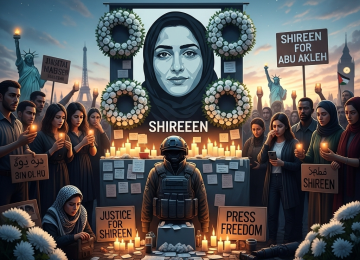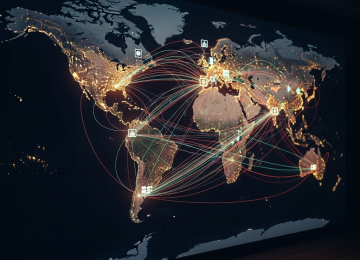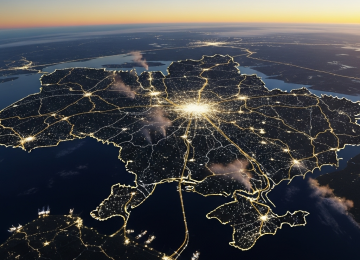Examining 5 Key Events in the History of Israel’s Killing
The subject of **israel’s killing** of Palestinians and other adversaries is one of the most contentious and heavily scrutinized topics in modern geopolitics. The discourse is often framed within a complex web of national security imperatives, international law, human rights concerns, and historical grievances. Analyzing this issue requires a nuanced approach that moves beyond simplistic narratives to explore the specific contexts, legal justifications, and international reactions surrounding these events. This article provides a structured examination of five pivotal moments that have shaped the debate and global understanding of this ongoing conflict.

The Legal Framework Surrounding Israel’s Killing of Adversaries
Before delving into specific events, it is crucial to understand the legal and ethical landscape. Israel’s military actions are often justified under the principle of self-defense, as enshrined in international law. However, the application of this principle is intensely debated. International Humanitarian Law (IHL), also known as the laws of war, governs the conduct of armed conflict. Key tenets include the principles of distinction (differentiating between combatants and civilians) and proportionality (ensuring an attack is not excessive in relation to the concrete and direct military advantage anticipated).
Critics, including numerous human rights organizations and UN bodies, frequently argue that Israel’s actions have violated these principles. The use of targeted killings, large-scale military operations in densely populated urban areas like Gaza, and the use of lethal force against protesters have all drawn significant condemnation. Conversely, Israeli officials maintain their operations are precise, target legitimate military objectives, and are necessary to protect their citizens from attacks. This fundamental disagreement over the interpretation and application of international law, which you can learn more about from the United Nations Office on Genocide Prevention and the Responsibility to Protect, is central to every case study that follows.

Case Study 1: The 1982 Sabra and Shatila Massacre
While Israeli forces did not directly carry out the killings, the Sabra and Shatila massacre is a critical event in understanding the history of the conflict. In September 1982, during the Lebanese Civil War, Christian Phalangist militias entered the Sabra and Shatila refugee camps in Beirut and killed hundreds, possibly thousands, of Palestinian and Lebanese Shia civilians. The area was under the control of the Israel Defense Forces (IDF), which had invaded Lebanon earlier that year.
An Israeli commission of inquiry, the Kahan Commission, found that Israel was “indirectly responsible” for the events. The commission concluded that Israeli military leaders should have foreseen the potential for a revenge massacre by the Phalangists and failed to take adequate measures to prevent it. Then-Defense Minister Ariel Sharon was found to bear “personal responsibility.” This event cemented a perception of Israeli culpability in large-scale civilian deaths and remains a significant point of reference in discussions about **israel’s killing** and its responsibilities as an occupying power.

Case Study 2: The First and Second Intifadas (1987-1993, 2000-2005)
The First and Second Intifadas, or Palestinian uprisings, were prolonged periods of intense conflict characterized by widespread protests, civil disobedience, and armed attacks. Israel’s response to both uprisings involved the killing of thousands of Palestinians. During the First Intifada, which began as a largely grassroots protest movement, the IDF’s use of live ammunition against stone-throwing youths drew international condemnation.
The Second Intifada was significantly more violent, involving suicide bombings by Palestinian militant groups and large-scale Israeli military incursions into the West Bank and Gaza. Operations like “Defensive Shield” in 2002 resulted in hundreds of Palestinian deaths and widespread destruction. The high number of civilian casualties during these operations, including women and children, fueled accusations of disproportionate force and war crimes. These periods demonstrated a pattern of lethal force being used in response to both armed resistance and popular uprisings, further entrenching the conflict’s deadly cycle. For more on regional dynamics, you can read our Middle East geopolitical analysis.

Case Study 3: The 2014 Gaza War (Operation Protective Edge)
The 2014 conflict between Israel and Hamas-led militant groups in Gaza was one of the deadliest episodes in the conflict’s history. Over 51 days, Israeli airstrikes and ground operations resulted in the deaths of over 2,200 Palestinians, the majority of whom were civilians, according to UN figures. On the Israeli side, 67 soldiers and 6 civilians were killed.
Israel stated the operation was a necessary response to rocket fire from Gaza. However, the scale of destruction and the high civilian death toll led to severe international criticism. UN reports and human rights organizations documented attacks on homes, schools, hospitals, and UN shelters. A UN Human Rights Council commission of inquiry found credible allegations that both Israel and Palestinian militant groups had committed war crimes. The extensive killing of civilians and the destruction of infrastructure in 2014 became a defining example for critics who argue that Israel’s military doctrine does not adequately protect civilian life in its operations.

Case Study 4: Great March of Return Protests (2018-2019)
Beginning in March 2018, Palestinians in Gaza organized the “Great March of Return,” a series of weekly protests along the fence separating the Gaza Strip from Israel. While organizers stated the protests were intended to be peaceful, some participants threw stones and Molotov cocktails and attempted to breach the fence.
The Israeli military’s response was to deploy snipers who used live ammunition against the protesters. Over the course of more than a year, over 200 Palestinians were killed, including medics, journalists, and children, and thousands more were wounded by live fire. A UN commission of inquiry investigated the killings and concluded it had reasonable grounds to believe that Israeli soldiers had committed violations of international human rights and humanitarian law that may constitute war crimes or crimes against humanity. Israel rejected the findings, stating its forces acted to prevent border breaches and attacks. This event highlighted the contentious issue of using lethal military force in a law enforcement or crowd control context.














